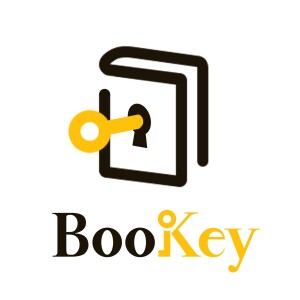
Decoding Human Behavior: The Book that Reads People Like a Book
 2024-07-23
2024-07-23
Download
Right click and do "save link as"
Chapter 1:Summary of The Book Read People Like a Book
The book "Read People Like a Book" by Patrick King is a comprehensive guide to understanding and interpreting body language, facial expressions, and vocal cues to better understand the emotions and intentions of others. King provides practical tips and techniques to improve your ability to read people accurately, including how to read micro-expressions, decode nonverbal cues, and recognize patterns of behavior. The book also delves into the importance of empathy, emotional intelligence, and communication skills in effectively deciphering people's true feelings and motivations. Overall, "Read People Like a Book" is a valuable resource for anyone looking to enhance their interpersonal skills and strengthen their relationships with others.
Chapter 2:the meaning of The Book Read People Like a Book
The book "Read People Like a Book" by Patrick King aims to provide readers with strategies and techniques for better understanding and interpreting the behavior, emotions, and intentions of others. By using insights from psychology, communication theory, and body language, the book offers practical advice for improving interpersonal relationships, communication skills, and emotional intelligence. Through examples, tools, and exercises, readers are encouraged to develop their ability to read people accurately and respond effectively in a variety of social situations. Ultimately, the book serves as a guide for enhancing social awareness and connecting more authentically with others.
Chapter 3:The Book Read People Like a Book chapters
Chapter 1: Introduction to Social Dynamics
The author introduces the concept of social dynamics and the importance of understanding human behavior in social situations. He discusses the power of perception and how it influences our interactions with others.
Chapter 2: The Four Levels of Perception
King explains the four levels of perception – verbal, non-verbal, intent, and impact – and how they shape our understanding of others. He provides examples of each level and how they can be used to read people effectively.
Chapter 3: Reading People Through Non-Verbal Communication
This chapter focuses on the importance of non-verbal communication in understanding others. King discusses body language, facial expressions, and tone of voice as key indicators of someone's true feelings and intentions.
Chapter 4: Understanding the Impact of Environment
King explores how our surroundings can influence our behavior and perception of others. He explains how environmental factors such as lighting, noise, and seating arrangements can affect our interactions with others
Chapter 5: Building Rapport and Trust
The author emphasizes the importance of building rapport and trust in social interactions. He provides strategies for establishing a connection with others and building strong relationships based on mutual understanding and respect.
Chapter 6: Overcoming Bias and Stereotypes
King discusses the impact of bias and stereotypes on our perception of others. He offers practical tips for overcoming these cognitive biases and approaching people with an open mind and empathy.
Chapter 7: Applying Social Dynamics in Everyday Life
In the final chapter, King provides practical tips and techniques for applying social dynamics in everyday situations. He emphasizes the importance of observing and listening to others, asking thoughtful questions, and adapting to different social contexts.
Overall, Read People Like a Book is a comprehensive guide to understanding human behavior and improving our social interactions. The author provides valuable insights and practical strategies for reading people effectively and building strong relationships based on trust and understanding.
Chapter 4: 10 Quotes From The Book Read People Like a Book
view more
The book "Read People Like a Book" by Patrick King is a comprehensive guide to understanding and interpreting body language, facial expressions, and vocal cues to better understand the emotions and intentions of others. King provides practical tips and techniques to improve your ability to read people accurately, including how to read micro-expressions, decode nonverbal cues, and recognize patterns of behavior. The book also delves into the importance of empathy, emotional intelligence, and communication skills in effectively deciphering people's true feelings and motivations. Overall, "Read People Like a Book" is a valuable resource for anyone looking to enhance their interpersonal skills and strengthen their relationships with others.
Chapter 2:the meaning of The Book Read People Like a Book
The book "Read People Like a Book" by Patrick King aims to provide readers with strategies and techniques for better understanding and interpreting the behavior, emotions, and intentions of others. By using insights from psychology, communication theory, and body language, the book offers practical advice for improving interpersonal relationships, communication skills, and emotional intelligence. Through examples, tools, and exercises, readers are encouraged to develop their ability to read people accurately and respond effectively in a variety of social situations. Ultimately, the book serves as a guide for enhancing social awareness and connecting more authentically with others.
Chapter 3:The Book Read People Like a Book chapters
Chapter 1: Introduction to Social Dynamics
The author introduces the concept of social dynamics and the importance of understanding human behavior in social situations. He discusses the power of perception and how it influences our interactions with others.
Chapter 2: The Four Levels of Perception
King explains the four levels of perception – verbal, non-verbal, intent, and impact – and how they shape our understanding of others. He provides examples of each level and how they can be used to read people effectively.
Chapter 3: Reading People Through Non-Verbal Communication
This chapter focuses on the importance of non-verbal communication in understanding others. King discusses body language, facial expressions, and tone of voice as key indicators of someone's true feelings and intentions.
Chapter 4: Understanding the Impact of Environment
King explores how our surroundings can influence our behavior and perception of others. He explains how environmental factors such as lighting, noise, and seating arrangements can affect our interactions with others
Chapter 5: Building Rapport and Trust
The author emphasizes the importance of building rapport and trust in social interactions. He provides strategies for establishing a connection with others and building strong relationships based on mutual understanding and respect.
Chapter 6: Overcoming Bias and Stereotypes
King discusses the impact of bias and stereotypes on our perception of others. He offers practical tips for overcoming these cognitive biases and approaching people with an open mind and empathy.
Chapter 7: Applying Social Dynamics in Everyday Life
In the final chapter, King provides practical tips and techniques for applying social dynamics in everyday situations. He emphasizes the importance of observing and listening to others, asking thoughtful questions, and adapting to different social contexts.
Overall, Read People Like a Book is a comprehensive guide to understanding human behavior and improving our social interactions. The author provides valuable insights and practical strategies for reading people effectively and building strong relationships based on trust and understanding.
Chapter 4: 10 Quotes From The Book Read People Like a Book
- "Understanding someone does not mean condoning their behavior, it simply means acknowledging their motives and reasons for acting the way they do."
- "People reveal so much about themselves in how they speak, their body language, and the patterns of their behavior. It's up to us to pay attention and decode these signals."
- "Empathy and active listening are powerful tools in understanding and connecting with others. By truly listening to someone, you can gain insight into their thoughts and feelings."
- "People often speak without words, through their body language and nonverbal cues. Pay attention to these signals, as they can reveal a lot about someone's true feelings and intentions."
- "It's important to remember that everyone sees the world through their own lens, shaped by their experiences and beliefs. To truly understand someone, you must try to see things from their perspective."
- "Judging someone based on appearance or a brief interaction is often misleading. Take the time to get to know someone on a deeper level before forming an opinion."
- "Communication is not just about words, it's about understanding the emotions and intentions behind the words. Pay attention to tone, facial expressions, and body language to truly grasp someone's meaning."
- "The key to understanding others lies in active observation and curiosity. Ask questions, listen attentively, and be open to learning about someone else's experiences and viewpoints."
- "It's important to remember that people are complex and multifaceted. Don't make assumptions based on a single interaction or piece of information – take the time to delve deeper and uncover the layers beneath the surface."
- "By honing your observation skills and practicing empathy, you can become adept at reading people like a book. Remember that everyone has a story to tell, and it's up to us to listen and understand."
More Episodes
Embracing Love: A Journey Back to Self
 2024-04-30
2024-04-30
 2024-04-30
2024-04-30
Whispers of Wisdom: A Gentle Reminder Book
 2024-04-28
2024-04-28
 2024-04-28
2024-04-28
012345678910111213141516171819
Create your
podcast in
minutes
- Full-featured podcast site
- Unlimited storage and bandwidth
- Comprehensive podcast stats
- Distribute to Apple Podcasts, Spotify, and more
- Make money with your podcast
It is Free
- Privacy Policy
- Cookie Policy
- Terms of Use
- Consent Preferences
- Copyright © 2015-2024 Podbean.com





